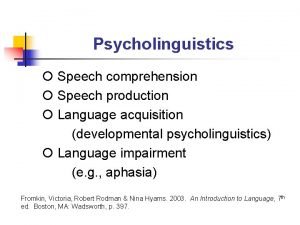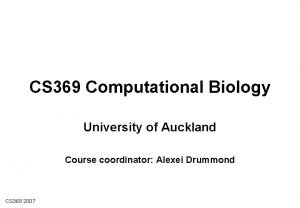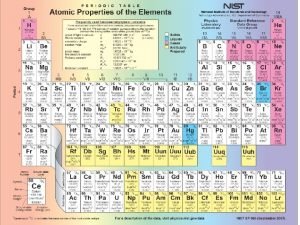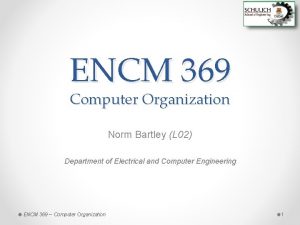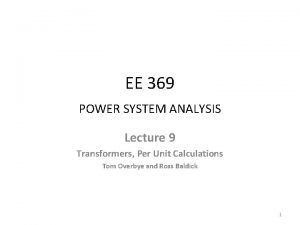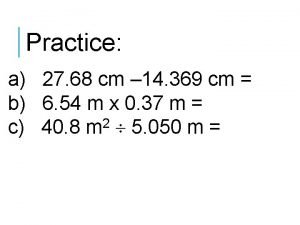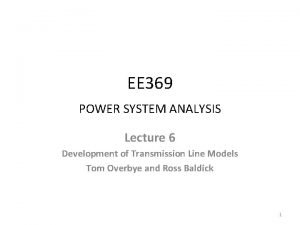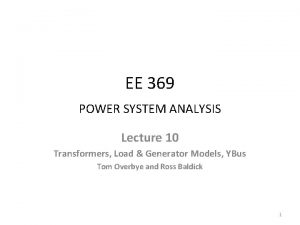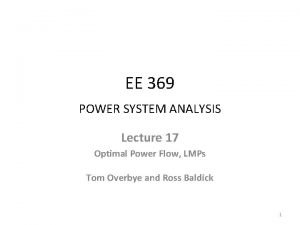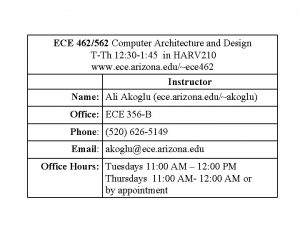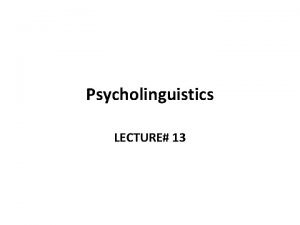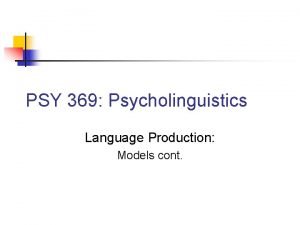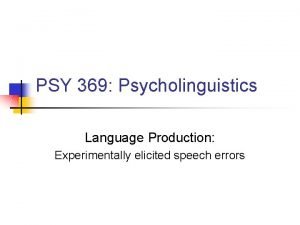PSY 369 Psycholinguistics Language Production Introduction Discourse in































- Slides: 31

PSY 369: Psycholinguistics Language Production: Introduction

Discourse in memory n Kintsch and colleagues (1990) It was Friday night and Jack and Melissa were bored, so they decided to catch a movie. Jack scanned the newspaper. He saw that they could just make the nine o’clock showing of the hot new romantic comedy. Off they went. n Read before Did this sentence occur in the paragraph? Jack scanned the newspaper. Jack looked through the movie ads. Jack looked over some editorials.

Discourse in memory n Kintsch and colleagues (1990) It was Friday night and Jack and Melissa were bored, so they decided to catch a movie. Jack scanned the newspaper. He saw that they could just make the nine o’clock showing of the hot new romantic comedy. Off they went. n Read before Similar meaning Did this sentence occur in the paragraph? Jack scanned the newspaper. Jack looked through the movie ads. Jack looked over some editorials. If Better memory here Evidence for surface form

Discourse in memory n Kintsch and colleagues (1990) It was Friday night and Jack and Melissa were bored, so they decided to catch a movie. Jack scanned the newspaper. He saw that they could just make the nine o’clock showing of the hot new romantic comedy. Off they went. n Read before Adds inference Did this sentence occur in the paragraph? Jack scanned the newspaper. Jack looked through the movie ads. Jack looked over some editorials. Infers which section did he scan. If Better memory here Evidence for Strong textbase

Discourse in memory n Kintch and colleagues (1990) It was Friday night and Jack and Melissa were bored, so they decided to catch a movie. Jack scanned the newspaper. He saw that they could just make the nine o’clock showing of the hot new romantic comedy. Off they went. n consistent inconsistent Did this sentence occur in the paragraph? Jack scanned the newspaper. Jack looked through the movie ads. Jack looked over some editorials. Consistent with situation model. Evidence for Strong situation model If Better memory here

Discourse in memory n Kintch and colleagues (1990)

Some of the big questions “the horse raced past the barn” n Production forms half of language ability: n n Input to comprehension More difficult problem than comprehension? n n Developmental lag Learning a second language

The Producer’s Problem n The problem: n Expressing non-ordered conceptual message via ordered array of sounds. n Start with a message (idea) and partition it, sequence it, and articulate it n n Which words How to order the words How to produce them (say or write or sign) But: under several constraints, in real time.

What we don’t do Dr. C: How much money is there in my current account and in my deposit account? <SILENCE> Dr. C: Hello? <SILENCE> Computer: Colourless green ideas sleeeeeep furiously. Dr. C: How much money is there in my current account and in my deposit account? <SILENCE> Computer: Your current a-ccount encompasses two hundred dollars. I cannot access how. . <SILENCE>. . in your deposit account money much is there.

Undesirable features n n n Meaningless and irrelevant content. Long silences, strange pausing. Infelicities of vocabulary and structure: n n n ‘Your current account encompasses $200’ ‘I cannot access how in your deposit account money much is there. ’ Strange intonation and pronunciation: n n ‘Your current a-ccount’ ‘Sleeeeeep’

What we do do n Speakers must produce utterances with: n n n Appropriate meaningful content Appropriate lexical items Appropriate syntax - grammatical and appropriate word order and structure Appropriate pronunciation, intonation, and phrasing. And they must do this fluently, in real time.

Getting the form right n Hearers: n n details of form can sometimes (often? ) be ignored (e. g. missing words, not paying attention). Speakers: n have to get every aspect of the form right, whether or not germane to message.

Getting the content wrong n Paradox: adept at getting form right but content wrong: n Subject-verb agreement errors The report about the fires are very long n Less than 5% errors in experiment designed to elicit them (Bock & Miller 1991).

Getting the content wrong n Paradox: adept at getting form right but content wrong: n Serious structural anomalies (unparseable) I cannot access how in your deposit account money much is there. n 0. 5% utterances (Deese 1984).

Getting the content wrong n Paradox: adept at getting form right but content wrong: n Sound/word errors Can you put the desk back on my book when you’ve finished with it? It’ll get fast a lot hotter if you put the burner on. n Garnham et al 1982: n Sound errors 3. 2/10, 000 words n Word errors 5. 1/10, 000 words

Doing it in time n Strongest constraint may be fluency: n n Incrementality: n n n have to get form right under time pressure. ‘Work with what you’ve got’ Flexibility: allows speaker to say something quickly, also respond to changing environment. Modularity: n n ‘Work only with what you’ve got’ Regulate flow of information.

Methodologies n Production is intrinsically more difficult subject to study than language comprehension n n Not susceptible to experimental study? Solutions: n Evidence from other disciplines n n e. g. , social psychology, linguistics, neurology, AI… Cognitive psychology: n n Historically: observational methods Recently: experimental methods

What’s the problem? n Comprehension: n n n Production: n n n Can control input precisely Moving from language to conceptual representation How do we control input? Moving from (unobservable) conceptual representation to language BUT: end product is observable in production but not comprehension

Methodologies n Some research methods n n Observational Experimental

Measures n What people say: n n Timecourse: n n Under which circumstances do they produce particular words, utterances etc May be intended, or may be errors How frequently do they do this How quickly do people produce language Neurophysiological: n How is language production represented in the brain?

Methodologies: Observational n Naturally occurring speech n Fluent speech: n Sentence types, verb forms, prosodic markers etc (Deese, 1984) n Distribution of extraposed structures (Arnold, Wasow, Losongco & Ginstrom, 2000) n n Distribution of thuh vs thee (Clark & Fox-Tree, 1997) Distribution of reduced phonological forms (Bard et al. , 2000)

Methodologies: Observational n Naturally occurring speech n Disfluent speech: n Scope of utterance planning (Ford & Holmes, 1978; Beattie, 1983) n Error detection and correction (Levelt, 1983)

Methodologies: Observational n Naturally occurring speech errors n n "The law I sign today directs new funds and new focus to the task of collecting vital intelligence on terrorist threats and on weapons of mass production. ” George W. Bush "There's an old saying in Tennessee - I know it's in Texas, probably in Tennessee - that says, fool me once, shame on— shame on you. Fool me—you can't get fooled again. " George W. Bush n "For seven and a half years I've worked alongside President Reagan. We've had triumphs. Made some mistakes. We've had some sex. . . uh. . . setbacks. ” George Bush Sr.

Experimental approaches n Not prey to same problems as observational studies: n n Reduces observer bias isolates phenomenon of interest increases potential for systematic observation Different problems! n n n How to control input and output? Input: ecological validity problem (‘controlling thoughts’) Output: controlling responses: n n response specification - artificiality ‘exuberant responding’ – loss of data

Methodologies: Picture naming & description Name these pictures “swan”

Picture naming & description Name these pictures “swing”

Picture naming & description Describe the action in this picture “The girl is throwing a ball to the boy” “The girl is throwing the boy a ball”

Picture-word interference task Name the picture (While ignoring the word) tiger

Neurophysiological Measures n Recent technological developments allow research on neurophysiological aspects of production. n n ERPs, f. MRI, PET, Which areas of the brain are involved? What is the timecourse of processing? Are different areas/processes/timecourses associated with different aspects of production?

Summary n n Language production requires assembling multiple levels of linguistic structure accurately and fluently, in real time. Language production in some ways harder to study than comprehension: n n Many methods: n n How to control input? keep propositional content constant create and study variations in processing mechanisms, rather than effects of variations in message itself. Problem remains: what is relationship between conceptual and linguistic processing? New technologies offer new possibilities for tracing timecourse and neurophysiological underpinnings of language production

An model of sentence production n Three broad stages: n Conceptualisation n n Formulation n n deciding on the message (= meaning to express) turning the message into linguistic representations Grammatical encoding (finding words and putting them together) Phonological encoding (finding sounds and putting them together) Articulation n speaking (or writing or signing)
 Alur produksi multimedia
Alur produksi multimedia What is discourse and discourse analysis
What is discourse and discourse analysis Language loss in psycholinguistics
Language loss in psycholinguistics Comprehension and production in language acquisition
Comprehension and production in language acquisition Comprehender adalah
Comprehender adalah Long division and short division
Long division and short division Cs 369
Cs 369 369
369 Ge power management devices
Ge power management devices Norm bartley
Norm bartley Story grammar
Story grammar 369 power
369 power Bio 369
Bio 369 369 project
369 project Tom overbye
Tom overbye 369 power
369 power Datapy.bar
Datapy.bar 369 power
369 power Task level parallelism
Task level parallelism Euro psy
Euro psy Ucf psychology department
Ucf psychology department Psy 2055
Psy 2055 Psy 2055
Psy 2055 Psy 2055
Psy 2055 Psy
Psy Daniel sanin
Daniel sanin Psy
Psy Psy 421
Psy 421 Psy
Psy Psy
Psy Psy 226
Psy 226 When sam listens to his girlfriend susan
When sam listens to his girlfriend susan



